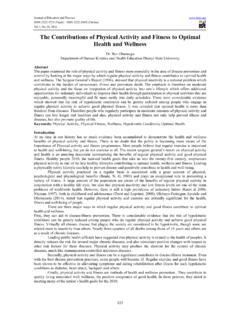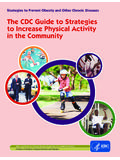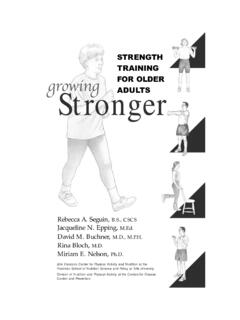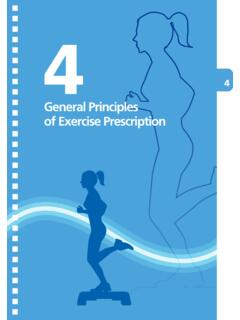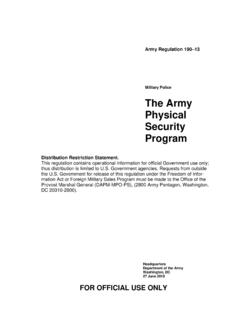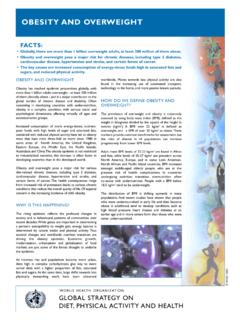Transcription of Physical Assessment of the Patient with Low Back Pain
1 Assessment of the Patient with Low Back PainMaxim S. Eckmann, of Anesthesiology and Pain MedicineUT Health San Antonio, Texas, USAF aculty DisclosureHonoraria/ExpensesConsulting/A dvisory BoardAVANOSS peakers BureauDannemillerFunded Research (Individual)Funded Research (Institution)Abbot, Boston Scientific, SPRR oyalties/PatentStock OptionsOwnership/Equity PositionInsight Dental Systems,iKareHoldingsEmployeeUTHealth San AntonioOtherNothing to disclose Yes, as follows: XOff-Label Product UseWill you be presenting or referencing off-label or investigational use of a therapeutic product?
2 No XYes, asfollows:Goals and Objectives Outline an approach for organizing causes of low back pain (LBP) Apply organized approach to LBP to select and interpret Physical exam maneuvers and assessments Recognize differential evaluation of LBP sources to include: Acute vs Chronic LBP Assessment of Red Flags Myofascial LBP FacetogenicLBP Sacroiliac Pain Radicular LBP DiscogenicLBP Vertebral/Sacral Fracture Pain Referred Pain Non-specific LBPI mpact of Low Back Pain (LBP) Fifth most common reason for all physician visits (USA). Prevalence 25% report at least 1 day LBP in last 3 months 7-8% report severe LBP in last year 75-85% lifetime prevalence in industrialized society Cost $26 billion direct health care costs 1998, now >$80 billion 2% of workforce compensated for LBP 5% of patients w/back pain disability account for 75% of the total Bone Joint SurgAm.
3 2018;100:368-74 Factors Associated with Low Back Pain Heavy lifting Twisting and bending Physical activity Obesity Arthritis and osteoporosis Pregnancy Age > 30 years Bad posture Stress and depressionPredictors of Delayed Recovery Depression / Anxiety Passive coping Job Dissatisfaction Significant Disability Disputed Compensation Claims Somatization Emotional DistressGeneral AssessmentPhysiologic Effects of Acute Pain,Generally Absent in Chronic Pain Metabolism increased Poor healing Muscle breakdown / weakness Cardiovascular Tachycardia, HTN Decreased Movement Increased risk of thromboembolism Further deconditioning Respiratory Derangement Tachypnea Atelectasis Adrenal axis Sodium and water retention Gastrointestinal Reduced motility Immunological Decreased NK cell count NeurogenicinflammationDetecting Pain: Pain Behavior First described by Fordyce as denoting the verbal and nonverbal behaviors exhibited by pain sufferers that serve to communicate the fact that they are experiencing pain.
4 Examples: Limping, guarding, grimacing, moaning. Origin: 1) Nociceptiveinput, spinal reflexes, involuntary 2) Operant conditioning (later)Geriatrics, 1978 Jan;33:59-62 Neuroanatomy: CutaneousDermatomes ClavicleC4 ThumbC6 4th, 5thfingerC8 NipplesT4 UmbilicusT10 Medial 1st ToeL4 Lateral Foot, 5thToeS1 Neuroanatomy: CutaneousDermatomes for Referred Pain Central DiaphragmC4 LungsT2-T6 HeartT1-T4 AortaT1-L2 EsophagusT3-T8 Pancreas, SpleenT5-T10 Somach, Liver, GBT6-T9 AdrenalsT8-L1 Small IntestineT9-T11 ColonT10-L1 Kidney, Ovaries, TestesT10-L1 UretersT11-T12 UterusT11-L2 Bladder, ProstateS2-S4 Urethra, RectumS2-S4 Visceral Diseases referring pain to the low back Peptic ulcer Pancreatitis Nephrolithiasis Pyelonephritis Prostatitis Pelvic infection or tumors Aortic dissectionConsideration for consultation.
5 Specific Problems to Target Axial Pain Myofascial Tendinous/ Ligamentous Facet Joint Vertebral Sacroiliac Discogenic With Neurologic Sx Radiculitis/ NeuroforaminalStenosis Spinal canal stenosis PiriformisSyndrome Lumbar Post-LaminectomySyndromeAxial low back pain: History Mechanism of Injury Specific Injury ( T-bone MVA) Indolent course Radiation Above knee ( sacroiliac pain, facet pain) Below knee, dermatomal( L5 radiculopathy) Below knee, non-dermatomal( spinal stenosis, CRPS) Quality (key words: burning, shooting, tingling) Timing / Precipitating factors Psychosocial problems/stressorsSummary of Common Physical Exam Maneuvers for LBP Gait Identify potential problems below the spine Neurological Sensation, Strength (L5 extensor hallicuslongus) Reflexes.
6 L4 (patellar), L5 (biceps femoris), S1 (ankle) Quadrant loading / Prone hip extension (facet joints) Segmental tenderness / trigger points (facet / myofascial) Faber / Gaenslentests (hips/SIJ) Straight leg raise (SLR) test / Crossed SLR (radiculitis) SLR 91% sensitive / Crossed SLR 88% specific **Spine. 2000;25 Imaging:Importance of Clinical CorrelationLow back painAcute4 wksSubacute4-12 wksChronic>12 wksAcute versus Chronic Pain 50 to 75% recover in 4 weeks 90% recover in 6 weeks Functional outcome depends more on Patient behavior than on the medical treatment Keys to Recovery Maintain function Manage psychosocial distress Be as active as possible Return to work as soon as possibleAcute versus Chronic Pain 30% of patients report at least moderate pain 1 year after acute episode 20% of patients report significant activity limitationsLow back painAcute4 wksSubacute4-12
7 WksChronic>12 wks RED Flags Red Flags Red Flags are symptoms suggestive of serious underlying pathology. In isolation not very predictive, guidelines vary Screening questions for acute LBP, or chronic LBP with change in symptoms Present in about 1-4% of cases. Fracture (5-6%) Malignancy (1-2%) esp. metastasis from prostate, breast and lung Infection (1%) osteomyelitis, discitis, abscess Cauda EquinaSyndrome ( ) Ankylosing spondylitis If serious cause of LBP is suspected, further workup is warranted Imaging Laboratory assayJ Bone Joint SurgAm. 2018;100:368-74 EurSpine J (2016) 25:2788 2802 Associations of Serious Back Pain Etiology Fracture Trauma Age > 50y Age > 70y Malignancy H/o cancer Unexplained weight loss Pain awakens from sleep Age > 50 y Age > 70 y Infection Fevers, chills, sweating Recent infection Pain awakens from sleep Persistent night sweats Cauda EquinaSyndrome Recent loss of bowel control Recent loss of bladder control Over 16 international guidelines and 46 symptoms/signs Bone Joint SurgAm.
8 2018;100:368-74 EurSpine J (2016) 25:2788 2802 Predictive value of risks, symptoms, signsJ Bone Joint SurgAm. 2018;100:368-74 Increased value of considering multiple factorsJ Bone Joint SurgAm. 2018;100:368-74 When to Refer to Specialist / Surgeon Bladder/bowel dysfunction Hypoesthesia over the perineum Rapidly progressing neurological dysfunction Loss of strength/sensation Hypo or Hyperreflexia Failed non-operative therapy in presence of known HNP, severe stenosis, spinal instabilityMyofascial LBPM yofascial Pain Syndrome (MPS) Sensory, motor or autonomic signs, and symptoms originated by hyperirritable nodules in a taut band of skeletal muscle.
9 Estimated lifetime prevalence 85%. These taut bands reflect myofascial trigger points (MTrPs). MTrPsradiate in characteristic patterns upon stimulation. Treatment focuses on returning muscle bands to normal working length. May be found in association with spine pain, possibly due to spontaneous motor endplate activity, stiffness, or central sensitization. Tender points, in comparison, characteristically do not et al. Medicine (2017) 96:10 Examination of MTrPsMuscle DirectionFinger MovementPressure Pain ThresholdTesting (PPT) kg/cm2 Referral Patterns for the Low Back / Lower ExtremitiesGlutealTensor Fascia LataeReferral Patterns for the Low Back / Lower ExtremitiesExtensor MusclesQuadratus LumborumReferral Patterns for the Low Back / Lower ExtremitiesMultifidi and OthersRectus AbdominisQuantitative Testing for MPS?
10 Calvo-Lobo et al. Medicine (2017) 96:10 Axial Pain:Tendinous/ Ligamentouspain Ligaments Part of the spine stabilization system Disc annulus / facet capsule / spinal ligaments Embedded mechanoreceptors in ligaments important in maintenance of proper posture and muscle coordination Diagnosis Difficult to differentiate from other sources of pain Suspect in radiographically unremarkable spines. Treatment Conservative / non-pharmacologic / pharmacologic Bed rest / inactivity not recommendedEurSpine J. 2006 May;15(5):668-76. Am J Sports Med. 2008 Jul;36(7):1347-57. Spine.

